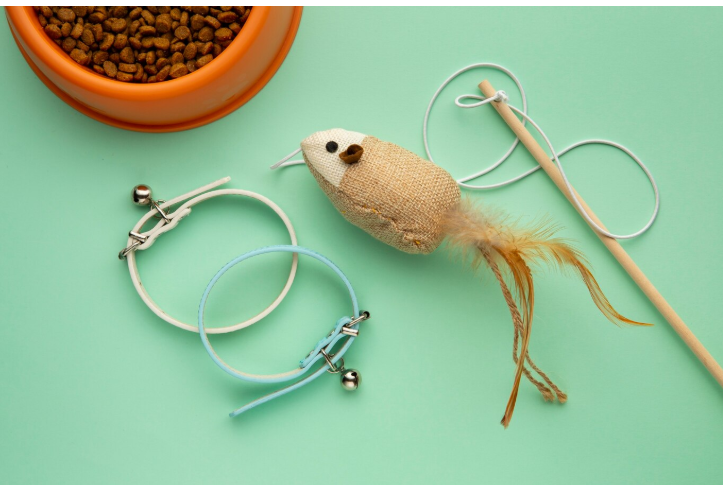Notifications

9 minutes, 7 seconds
-5 Views 0 Comments 0 Likes 0 Reviews

Cats are naturally curious creatures, and playtime is essential for their mental and physical well-being. However, when it comes to choosing cat toys, safety should always be the top priority. While there are countless options on the market, not all toys are created equal. Some can pose hidden dangers to your feline friend, ranging from choking hazards to toxic materials. In this comprehensive guide, we’ll explore what to look out for when buying cat toys, how proper playtime ties into overall cat grooming, and even touch on safe options for dog toys if you have a multi-pet household.
Playtime isn’t just fun for your cat—it’s a crucial part of their development and health. Engaging with cat toys helps with:
Physical Exercise: Prevents obesity and related health issues.
Mental Stimulation: Keeps their mind sharp and reduces boredom-related behaviors.
Bonding: Enhances the relationship between you and your pet.
However, unsafe toys can lead to serious injuries, digestive blockages, or even poisoning. That’s why knowing what to look for is essential.
Always opt for cat toys made from non-toxic materials. Cats tend to chew, lick, and even swallow parts of their toys, making it vital to ensure the materials are safe. Look for labels that specify the toy is BPA-free, phthalate-free, or made from food-grade materials.
Toys with small detachable parts can be a choking hazard. Ensure that any attachments like bells, feathers, or beads are securely fastened and large enough that they can’t be swallowed.
Cats have sharp claws and teeth, and they can quickly destroy poorly made toys. Choose toys that are built to withstand rough play. Stitching should be strong, and materials should not easily fray or break apart.
The toy should be appropriately sized for your cat’s age and breed. Toys that are too small can easily be swallowed, while overly large toys might be intimidating and go unused.
Avoid toys with long strings or ribbons, as these can become tangled around your cat’s neck or limbs. If you do choose toys with strings, ensure they are only used under supervision.
Not all cat toys are designed for unsupervised play. Toys with strings, feathers, or electronic components should only be used when you can monitor your cat to prevent accidents.
To keep things interesting and safe, rotate your cat’s toys regularly. This not only keeps them engaged but also allows you to inspect toys for wear and tear.
Toys that involve you in the play, like laser pointers or feather wands, are great for bonding and allow you to control the play environment. However, be mindful of overexertion, especially in older cats.
For solo play, choose toys that are safe to leave with your cat. Solid rubber balls, sturdy plush toys without small parts, and puzzle feeders are good options.
Regularly check your cat’s toys for signs of damage. Frayed edges, loose parts, or punctured materials can become hazardous over time.
Toys should be cleaned regularly to prevent the buildup of bacteria. Many soft toys are machine washable, while hard toys can be cleaned with mild soap and water.
Certain cat toys can double as grooming tools. Brushes embedded in play structures or textured toys can help with shedding and keep your cat’s coat healthy.
Regular play reduces stress, which in turn makes cat grooming easier. A relaxed cat is more likely to tolerate brushing and nail trimming.
If you have both cats and dogs, it’s important to differentiate between cat toys and dog toys. Dog toys are often larger and made for more aggressive chewing, which can be dangerous for cats.
Create separate play zones for your pets to prevent accidents. Cats may feel threatened by larger dog toys, while dogs might accidentally swallow smaller cat toys.
If your pets like to play together, supervise their interactions closely. Ensure the toys are appropriate for both animals and watch for any signs of aggressive behavior.
Look for cat toys made from natural materials like organic cotton, hemp, or untreated wood. These are not only safer but also better for the environment.
Some brands offer recyclable or biodegradable cat toys, which can be a great choice for eco-conscious pet owners.
Low-quality plastic can break easily and pose a choking hazard. Always check the durability before purchasing.
Avoid any toy with sharp edges or points, as these can injure your cat’s mouth or paws.
If a toy has a strong chemical odor, it’s likely made from harmful materials. Always opt for toys with no or minimal scent.
Excessive Chewing: If your cat is aggressively chewing through a toy, it’s a sign the material may not be safe.
Loose Threads or Parts: Frayed or loose parts can be swallowed and should be removed immediately.
Loss of Interest: While not necessarily a safety issue, a sudden loss of interest might indicate discomfort or a problem with the toy.
Choosing safe cat toys is essential for your pet’s health and happiness. By paying attention to materials, size, and durability, you can ensure that playtime is both fun and safe. Regular inspections and supervised play can further reduce risks. Additionally, integrating safe toys into your cat grooming routine can make the experience more enjoyable for your feline friend. And if you have dogs at home, understanding the difference between cat toys and dog toys will help maintain a safe environment for all your pets.
Investing in high-quality, safe toys isn’t just about keeping your cat entertained—it’s about ensuring their well-being and creating a loving, secure environment where they can thrive. So next time you’re shopping for your furry friend, remember: safety first!

